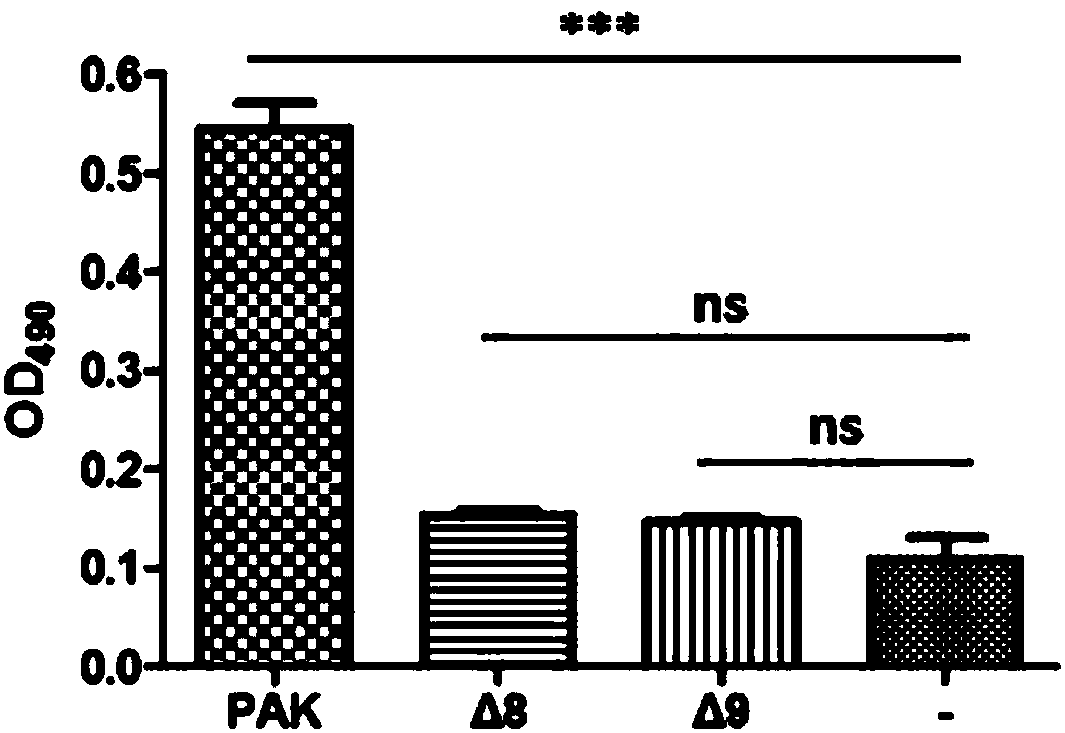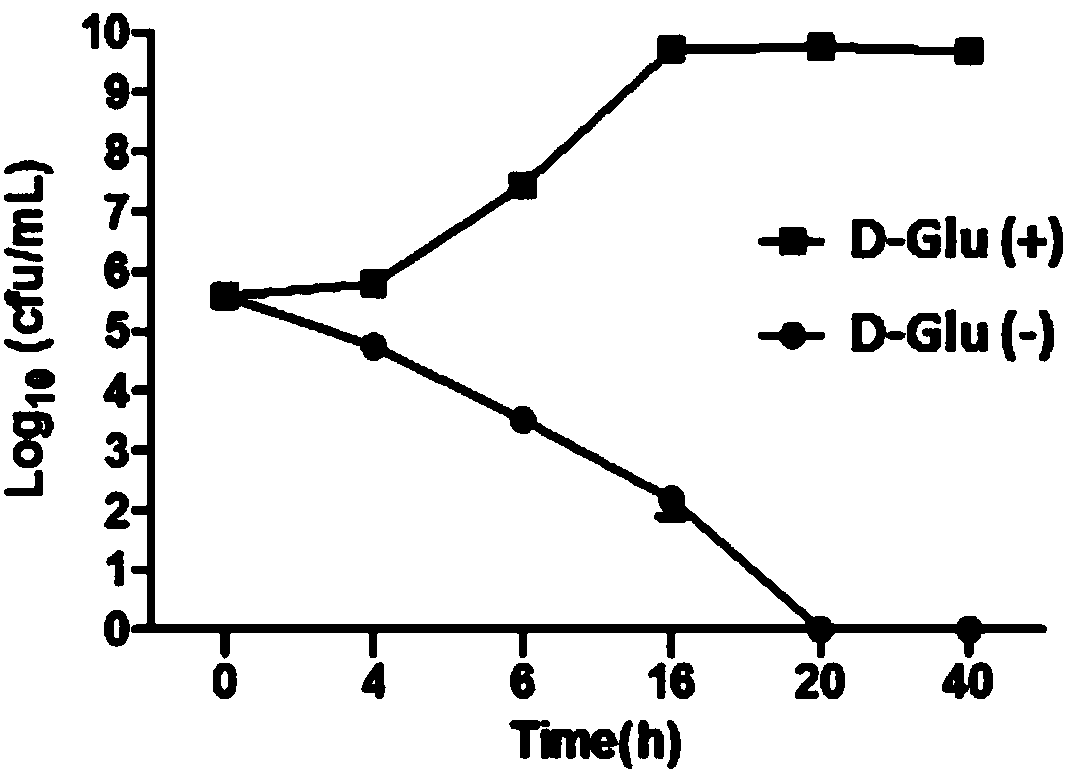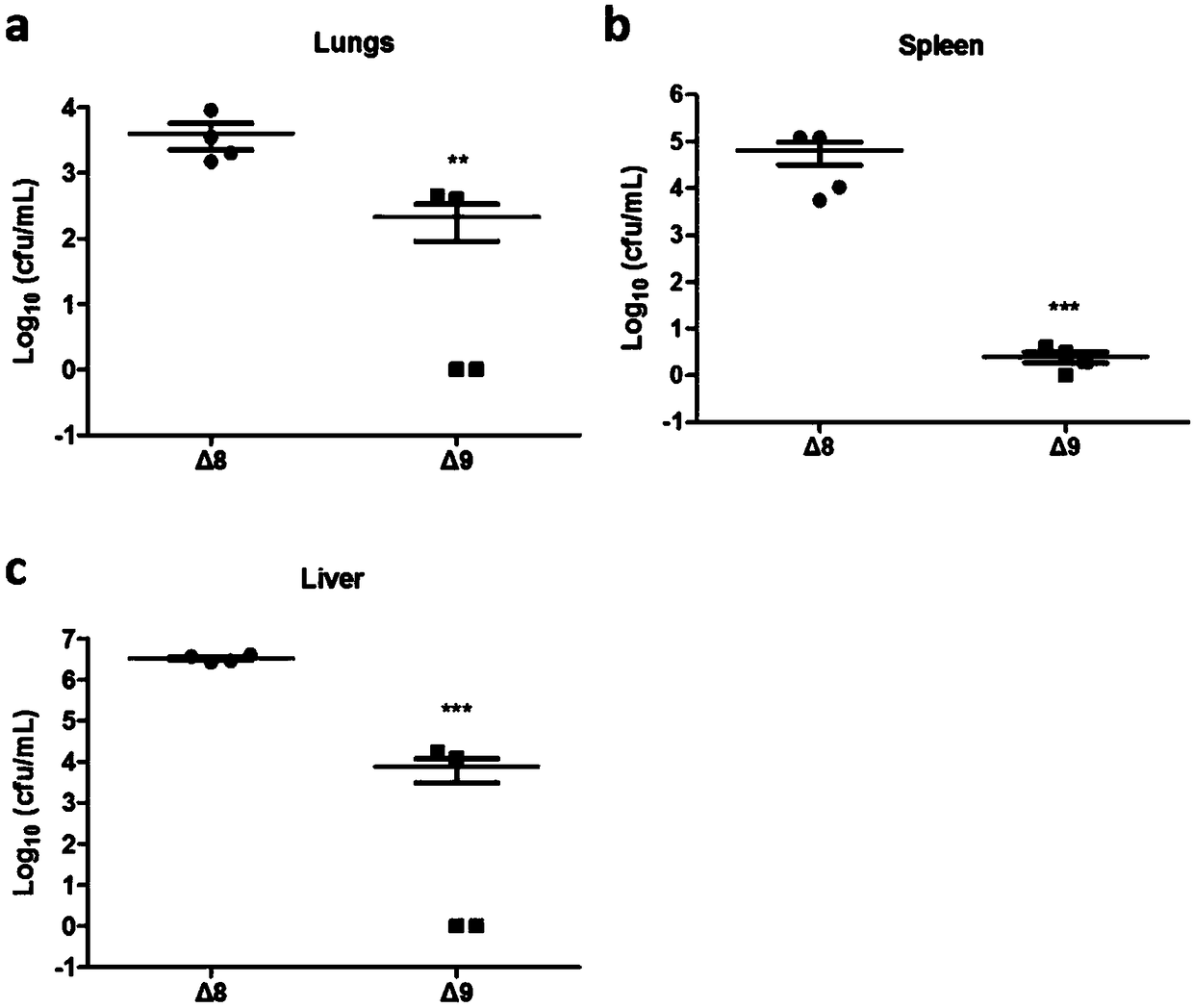Building method of attenuated pseudomonas aeruginosa and application of attenuated pseudomonas aeruginosa to protein transfection
A Pseudomonas aeruginosa, construction method technology, applied in microorganism-based methods, biochemical equipment and methods, bacteria and other directions, can solve the problems of loss of cell stemness, antibiotic sterilization side effects can not be ignored, etc., to achieve the effect of efficient injection
- Summary
- Abstract
- Description
- Claims
- Application Information
AI Technical Summary
Problems solved by technology
Method used
Image
Examples
Embodiment 1
[0107] Example 1. Construction of genetic engineering strain Δ9
[0108] Using the genomic DNA of the Δ8 strain as a template, a homology arm fragment of about 1-kb upstream and downstream of murI was amplified by PCR. The above PCR product was digested and cloned into the plasmid pEX18Tc to construct the gene knockout plasmid pEX18Tc-murI. The knockout plasmids stored in DH5a were extracted, and the plasmids were transformed into Escherichia coli S17 competent cells by chemical transformation method. The gene knockout plasmid in S17 was transferred into the Δ8 strain by conjugative transfer method, and the murI gene in the Δ8 genome was knocked out. Single-crossover strains with homologous recombination in one homologous arm were screened on an agarose plate containing 50 μg / mL tetracycline, and then homologous homologous arms on both sides were screened on an agarose plate containing 7.5% sucrose and 10 mM D-Glu. The strain with homologous recombination finally obtained th...
Embodiment 2
[0109] Example 2. Cytotoxicity of genetically engineered strain Δ9 to mammalian HeLa cells
[0110] The wild-type strain PAK, the attenuated strain Δ8 and the auxotrophic attenuated strain Δ9 were selected as infection strains, and their cytotoxicity to mammalian HeLa cells was compared. Cytotoxicity was detected by lactate dehydrogenase (LDH) cytotoxicity detection kit. When the cells are damaged, the enzymes in the cytoplasm will be released into the culture medium, including lactate dehydrogenase LDH with relatively stable enzyme activity. Under the action of lactate dehydrogenase, NAD + It is reduced to NADH, and NADH is catalyzed to generate a strong chromogenic substance, which produces an absorption peak at a wavelength of 490nm. The quantitative analysis of cytotoxicity can be realized by quantifying the activity of LDH through colorimetry. Cultivate HeLa cells to a cell density of 70-80%; pick fresh PAK and Δ8 single colonies and inoculate them into LB medium, and in...
Embodiment 3
[0111] Embodiment 3. Growth and survival rate in vitro of genetic engineering strain Δ9
[0112] Because bacterial infection of cells ultimately involves the issue of how to remove bacteria, we used to use high concentrations of ciprofloxacin to completely remove bacteria, but through transcriptome analysis, we found that high concentrations of ciprofloxacin treatment would seriously affect the expression profile of cells. Impact. When the murI gene is mutated, the bacteria cannot synthesize the cell wall and eventually die, thus realizing the method of completely eradicating the bacteria without using antibiotics or using ordinary double antibodies, and also reducing the toxicity of high-concentration ciprofloxacin to the cells effect. Therefore, in order to confirm that the murI mutant Δ9 cannot reproduce without D-Glu supplementation, we investigated the growth of Δ9 in vitro, with and without D-Glu(+) and without D-Glu(-), each After a certain period of time, the number ...
PUM
| Property | Measurement | Unit |
|---|---|---|
| pore size | aaaaa | aaaaa |
Abstract
Description
Claims
Application Information
 Login to View More
Login to View More - R&D
- Intellectual Property
- Life Sciences
- Materials
- Tech Scout
- Unparalleled Data Quality
- Higher Quality Content
- 60% Fewer Hallucinations
Browse by: Latest US Patents, China's latest patents, Technical Efficacy Thesaurus, Application Domain, Technology Topic, Popular Technical Reports.
© 2025 PatSnap. All rights reserved.Legal|Privacy policy|Modern Slavery Act Transparency Statement|Sitemap|About US| Contact US: help@patsnap.com



